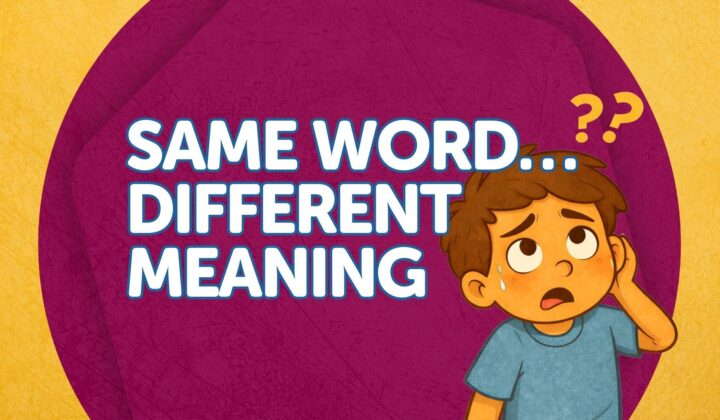Learn more about the journey that led to us equipping kids to carefully evaluate every idea they encounter.
Meet members of our team who have contributed to curriculum development.
Hear from real users of the Foundation Curriculum.
Learn what we believe about God, Jesus, Scripture, and more.
Teaching Our Kids About Using Emotions and Discernment
“You always have to follow your feelings, no matter what anyone else says.” This statement caught my friend’s attention while she watched a Sofia the First episode with her daughters. The theme of the show was helpful – do not place blind faith in those who aren’t worthy of trust. However, my friend didn’t want her girls to walk away thinking they should always follow their feelings. She sent me the clip and we chatted about different ideas to help her girls evaluate the message.
Our children will repeatedly encounter this idea that their feelings are the most reliable guide for truth. How can we equip them to rightly recognize their emotions, without being led by them? Here are a couple ways we can intentionally prepare our children to make decisions based on discernment rather than pure emotion.
1. Train Them to Identify Emotions That Align With Reality and Those That Don't
As image bearers of the living God, we are emotional creatures. We feel happiness, sadness, joy, sorrow, anger, excitement - the whole gamut. However, as fallen creatures, these emotions do not always align with truth. There are times we rightly feel anger over unjust situations. While other times we are angered when something or someone has failed to meet our unrealistic expectations. We feel anxious when entering a situation posing an actual threat to our safety. Yet we also experience anxiety over hypothetical situations that most likely won't happen. Sometimes our emotions steer us correctly. Other times they do not.
If we want our children to walk in truth, we need to help them see that our emotions are a foundational part of being human. However, these emotions cannot always be trusted or acted upon. An easy way to begin this conversation is to have our kids draw pictures of different emotions they feel. With younger children, we can have them make faces that express emotion. We can ask them what they want to do when they experience these different feelings. Then we can help them identify times when these emotions align with truth and times these emotions lead us astray. This activity can help them see their feelings are not an infallible guide.
2. Prepare Them to Filter Emotions Through the Lens of Reason
At the same time, we do not want to teach our children to stuff their emotions or ignore those “gut feelings” that warn them when a person or situation is potentially dangerous. That is where we can teach them the art of discernment. Unlike pure emotional responses, discernment combines subjective feelings with objective evidence. Discernment looks at all the clues available, considers emotions, and then makes a decision based on the evidence.
To help our children develop discernment, we can have them practice a “Who, What, Where, How Analysis.” We can give them a hypothetical situation they may face and have them answer the following questions:
- Who are the people involved?
- What do I know about them and the situation?
- Where can I go for help deciding what to do?
- How might I feel in this situation?
We can then have them act out the different choices that could be made. An easy way to do this is to get a copy of Focus on the Family’s Sticky Situations and play as a family. This activity provides great practice in evaluating subjective feelings through objective evidence.
Our children will repeatedly encounter the claim that their emotions are the most reliable measure of truth. Let’s be proactive in our approach, helping our children see that our emotions are a gift from God, but, in our fallen state, do not always align with reality. Instead of strictly relying on our emotions, we can use the clues around us to discern whether or not these feelings are guiding us in truth.

About Elizabeth Urbanowicz
Elizabeth Urbanowicz is a follower of Jesus who is passionate about equipping kids to understand the truth of the Christian worldview. Elizabeth holds a B.S. in Elementary Education from Gordon College, an M.S.Ed. in Education from Northern Illinois University, and an M.A. in Christian Apologetics from Biola University. Elizabeth spent the first decade of her professional career teaching elementary students at a Christian school. Elizabeth now works full time on developing comparative worldview and apologetics resources for children. Her goal is to prepare the next generation to be lifelong critical thinkers and, most importantly, lifelong disciples of Jesus.
Related Posts and insights

KPop Demon Hunters: A Biblical Worldview Movie Review for Families
Help your kids think biblically about KPop Demon Hunters with four gospel-centered questions that turn movie night into a faith-building conversation.

Boost Comprehension: State the Lesson Objective First
Help kids become independent learners by stating lesson objectives upfront and reviewing them at the end. A simple, biblical strategy for better comprehension.

Teaching Kids to Think Carefully About Words
Teach kids to think biblically about words. Learn how terms like "stealing" and "love" get twisted in culture and equip children with critical thinking.
